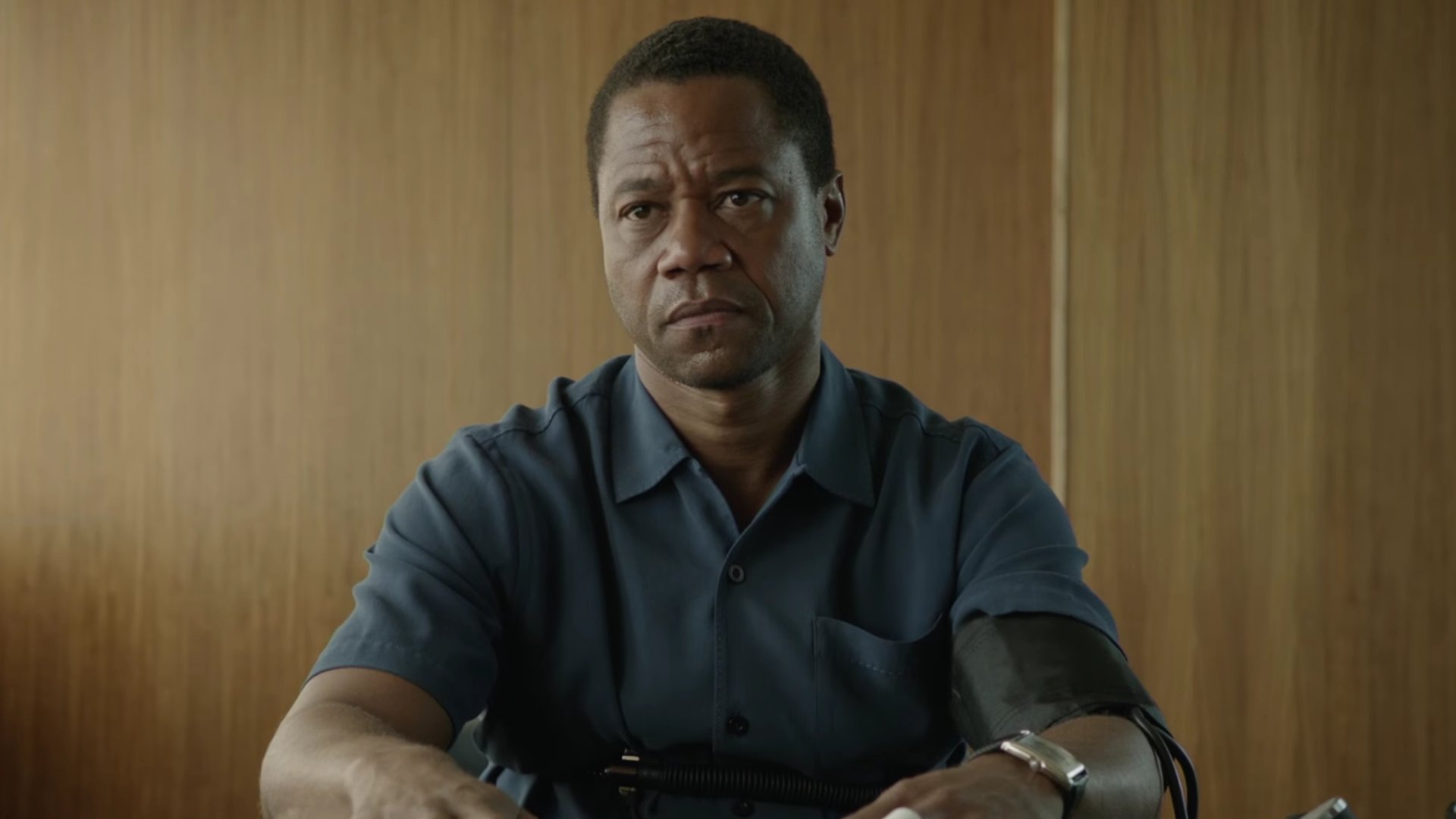On Tuesday night, as the clock approached 11 p.m. and the sensation surrounding The People v. O.J. Simpson: American Crime Story approached its expiration, things got real. Throughout the season’s 10 episodes, the FX show had relied upon the outstanding acting of a star-studded cast to bring the infamous 1995 trial back to life. The show’s creators made the decision not to include much, if any, original footage from the case. Shots of grainy courtroom drama intended to look like the original television coverage still featured the actress Sarah Paulson staring down Cuba Gooding Jr. instead of their actual counterparts, prosecutor Marcia Clark and O.J. Simpson, facing off.
But in episode 10, as the not guilty verdict was about to be read, fiction was interwoven with reality. The faces of the actors were joined by quick cuts to real footage of Americans waiting for the verdict in 1995. The people, they are gathered in Times Square, in their workplaces, in their local bar, each having already chosen a side, awaiting history.
In this moment the mirror is turned on us, the American viewing audience, and something becomes very clear. The People v. O.J. Simpson, from its very first moment, has not been about a football star or his slain ex-wife. It’s been a show about America, then and now.
This fact has been buried under the praise heaped upon actors and writers or the discussion about case specifics and courtroom drama. And I’ll take this opportunity to say the praise is very much deserved. I watched “Marcia, Marcia, Marcia,” twice, just to confirm that Paulson turned in the best television performance of the year. As a piece of entertainment, The People v. O.J. Simpson is better than most everything on television right now.
Discussion about the case and specifically the re-emergence of questioning whether or not O.J. did it is, well, very dumb. Twenty years later, nothing said now matters. And besides, O.J. Simpson is currently in prison for another crime.
What’s lost is the idea of The People v. O.J. Simpson as something more than a period piece. No matter how much screen time was given to O.J. or Clark or Johnnie Cochran, the biggest character in this show is America in 1995. They are represented in sample size by the jury and in a much larger, much more abstract sense by the constant pressures put on those directly involved.
Spurred by constant media coverage, the American public was driven into a frenzy by the O.J. trial and the effects of this are many. The attention and criticism laid upon every person publicly spotlighted was strong enough that it still marks them today. Everyone involved in fighting for either side is still remembered for doing just that. In the trial there was constant consideration not only about what would be seen by the jury, but what would be seen by the television cameras because the public would blow up anything they could. Even within the 12-person jury, there were constant changes as the court struggled to find people who were not biased in some way. In each episode of The People v. O.J. Simpson, both the prosecution and the defense spoke about public opinion as if it was a tidal wave, gaining power and almost out of control. The question was only which direction the tide was taking it. In 1995, America let this case tear them apart.
I keep using “they” to describe my country in that time for reasons I don’t exactly know. The most obvious would be an almost unconscious desire to distance myself. But if Tuesday night’s inclusion of real footage of real Americans gathering in common places is indicative of anything, it’s that I should still be using the inclusive “we.” That’s us. That’s me. That’s our country and it still is.
And look at us now. There still exists a great divide within the people of this nation. To deny that would be self-deception. Not only racially, but politically too we are being driven further and further apart by one event after another. Too many of us have chosen to stand too firmly on one side of an issue. We view any attempts at reason or compromise as a shove in the direction of the abyss stretching between us and our purported enemies. We talk about this popular television show as though it’s a beautiful crystallization of how things used to be, but how different is it from how things are right now?
More than a period piece, The People v. O.J. Simpson should be interpreted as a warning. The hope now has to be that in 2036, viewers won’t turn on their TV to a dramatic recreation of today and see it as a time when this country took itself to the ledge. I hope they don’t see actual footage of people in Times Square, in their workplaces, in their local bar, each with their sides already chosen and think as I did Tuesday night, how did this happen?



